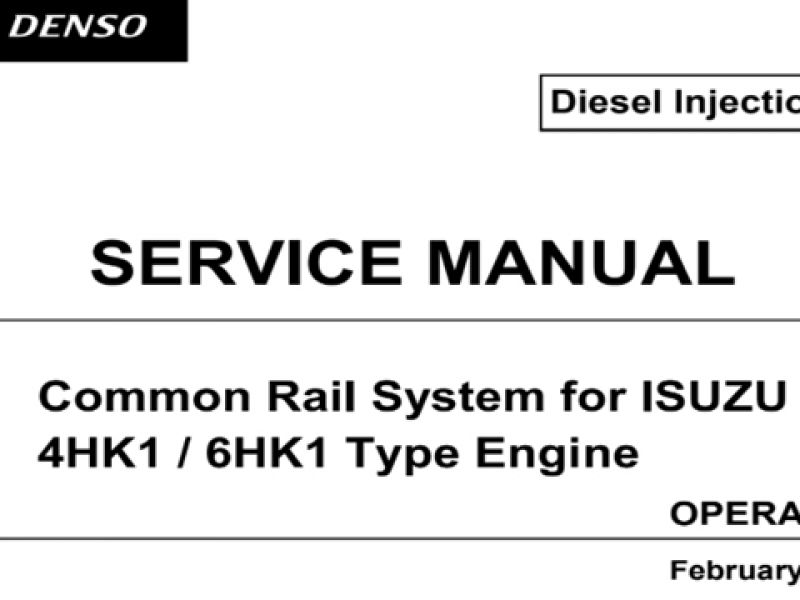
To meet the high pressurization requirements for the engine to deliver cleaner exhaust gas emissions, lower fuel consumption and reduced noise, advanced electronic control technology is being adopted in the fuel injection system. This manual covers the electronic control model Common Rail system with HP3/HP4 pump for the ISUZU 4HK1/6HK1 type engines which are used to ELF and GM 560 series respectively. Complex theories, special functions and components made by manufacturers other than DENSO are omitted from this manual. This manual will help the reader develop an understanding of the basic construction, operation and system configuration of the DENSO manufactured components and brief diagnostic information.
Outline of System
The common rail system was developed primarily to cope with exhaust gas regulations for diesel engines, and aimed for
1. further improved fuel economy 2. noise reduction and 3. high power output.
System Characteristics
- The common rail system uses a type of accumulation chamber called a rail to store pressurized fuel, and injectors that contain electronically controlled solenoid valves to spray the pressurized fuel into the cylinders.
- Because the engine ECU controls the injection system (including the injection pressure, injection rate, and injection timing), the injection system is unaffected by the engine speed or load.
- This ensures a stable injection pressure at all times, particularly in the low engine speed range, and dramatically decreases the amount of black smoke ordinarily emitted by a diesel engine during start-up and acceleration.
- As a result, exhaust gas emissions are cleaner and reduced, and higher power output is achieved.
Operation of the Supply Pump
- As shown in the illustration below (in case of HP3 pump), the rotation of the eccentric cam causes the ring cam to push Plunger A upwards. Due to the spring force, Plunger B is pulled in the opposite direction to Plunger A.
- As a result, Plunger B draws in fuel, while Plunger A pumps it to the rail. In the case of the 4-cylinder engine used with the HP3 pump, each plunger pumps fuel in a reciprocal movement during the 360 cam rotation.
- Conversely, in the case of the 6-cylinder engine used with the HP4 pump, 3 plungers pump fuel in a reciprocal movement for each one rotation of the cam.

Supply pump (HP3/HP4)
The supply pump draws fuel from the fuel tank, and pumps the high pressure fuel to the rail. The quantity of fuel discharged from the supply pump controls the pressure in the rail. The SCV (Suction Control Valve) in the supply pump effects this control in accordance with the command received from the ECU.